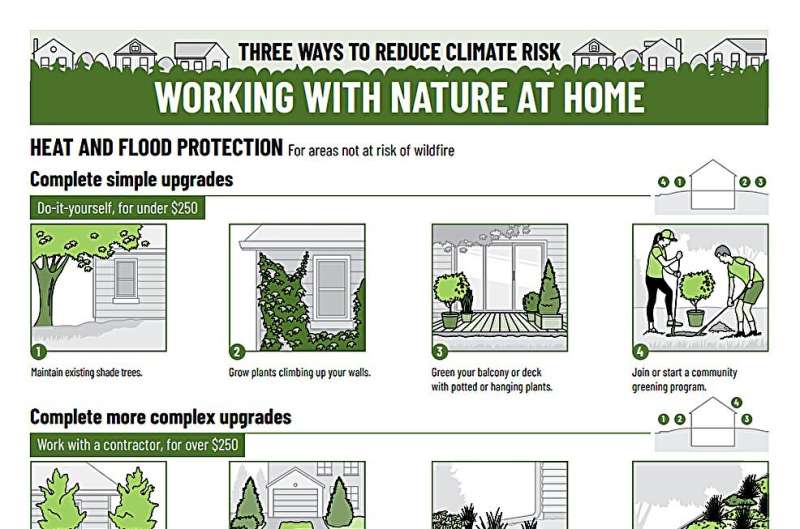This article has been reviewed according to Science X's editorial process and policies. Editors have highlighted the following attributes while ensuring the content's credibility:
fact-checked
trusted source
proofread
Nature holds the answer to limiting the impact of extreme weather, say new guidelines

Wildfires, flooding, and extreme heat—these perils are threatening Canada's residential housing market, and homeowners, in ways not imagined just a few years ago.
The Intact Center on Climate Adaptation, University of Waterloo, has released new guidance that presents residents with ways to protect their property by working with nature to limit the impacts of extreme weather—think planting a rain garden to absorb water and avoid basement flooding, or using shade trees to limit direct sunlight from heating a home and allowing for cost savings on air conditioning.
When it comes to extreme weather, the definition of what is green has gone beyond an initial focus on decarbonization, to simultaneously considering climate resilience and nature.
"We need to use the whole toolbox of nature-based and built solutions to prepare for climate change, including around our own homes," said Joanna Eyquem, who led the development of the new infographic. "Solutions that work with nature not only lower risk; they can also bring many health and quality of life benefits. But we need the right solutions in the right places. For example, within wildfire risk zones, a different approach is required to limit fuel sources near the home, such as pruning lower branches to create clearance from the ground, and removing conifers close to the house."
Actions in the infographic will help Canada achieve recently announced targets in the newly minted National Adaptation Strategy (NAS), which calls for household protection, including:
- By 2025, 60% of Canadians, including northerners and Indigenous Peoples, are aware of the disaster risks facing their households.
- By 2025, 50% of Canadians have taken concrete actions to better prepare for and respond to climate change risks facing their households.
Effective communication with residents on climate risks and home-level solutions is key to meeting NAS targets over the next few years.
"Finalization of the National Adaptation Strategy is a step in the right direction—we now need follow through," said Dr. Blair Feltmate, head of the Intact Center. "This includes getting everyone on board using clear guidance so that resilience is embedded in everyday decisions."
The new, Working with Nature at Home, guidelines are freely available and can be tailored for specific audiences. They are part of a suite of "three-step" guidelines developed to help Canadians tackle flooding, wildfire and extreme heat.
Governments and businesses can help residents to help themselves by distributing this free guidance before the next disaster hits.
Provided by University of Waterloo




















